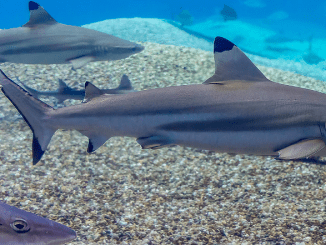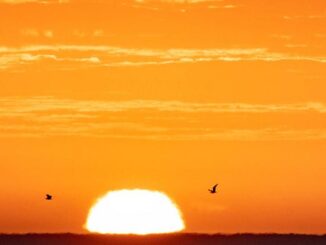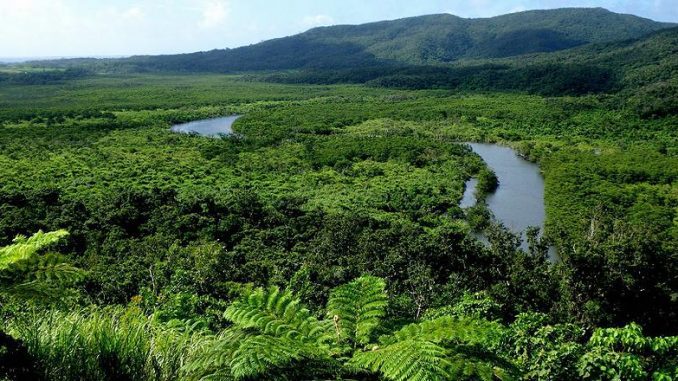
PARIS, France, August 3, 2021 (ENS) – Sheltering endangered animals, birds and butterflies, giant trees, pristine waters – five natural sites are so precious to the world that they deserve the protection of World Heritage status, the UNESCO World Heritage Committee has decided. The five are now on the list, bringing the number of World Heritage natural sites to 218.
During its two-week-long 44th session that concluded Friday, held online and chaired by China from Fuzhou, the 21-country World Heritage Committee examined nominations submitted in 2020, when the session had to be postponed because of the COVID-19 pandemic, and in 2021.
Sites designated as World Heritage Sites receive protections that include the drafting or improving of management plans, the adding and training of new staff, coordinating with the community more harmoniously, and encourging government commitment to site conservation and protection.
The Five Newly Inscribed Natural Sites: 2020-2021
Japan: Amami-Oshima Island, Tokunoshima Island, Northern part of Okinawa Island, and Iriomote Island
Encompassing 42,698 hectares (160 square miles) of subtropical rainforests on four islands of a chain in Japan’s southwest, the serial site forms an arc on the boundary of the East China Sea and Philippine Sea whose highest point, Mount Yuwandake on Amami-Oshima Island, rises 694 meters (2,277 feet) above sea level. Uninhabited by humans, the site has high biodiversity value with a very high percentage of endemic species, found nowhere else of Earth, many of them globally threatened.
The site is home to endemic plants, mammals, birds, reptiles, amphibians, inland water fish and decapod crustaceans, including, for example, the endangered Amami Rabbit (Pentalagus furnessi) and the endangered Ryukyu Long-haired Rat (Diplothrix legata) that represent ancient lineages and have no living relatives anywhere in the world.
Five mammal species, three bird species, and three amphibian species on the site have been identified globally as Evolutionarily Distinct and Globally Endangered species. Different endemic species are found on each island that are not found elsewhere.
Georgia: Colchic Rainforests and Wetlands
The site is made up of seven component parts, within an 80km (50 mile) long corridor along the warm-temperate and extremely humid eastern coast of the Black Sea. They provide a series of the most typical Colchic ecosystems at altitudes ranging from sea level to more than 2,500 metres above it.
The main ecosystems are ancient deciduous Colchic rainforests and wetlands, percolation bogs and other mire types of the distinct Colchic mire region.
The Colchian forests are mixed, with deciduous black alder (Alnus glutinosa), hornbeam (Carpinus betulus and C. orientalis), Oriental beech (Fagus orientalis), and sweet chestnut (Castanea sativa), together with evergreen Nordmann fir (Abies nordmanniana, the tallest tree in Europe at 78m), Caucasian spruce (Picea orientalis) and Scots pine (Pinus sylvestris).
The vegetation in this ecoregion ranges from temperate rainforest to coastal bottomland forests, peatlands and coastal sand dunes, according to the nonprofit group WWF, which does conservation work in the region.
“The old-growth forests are home to one of the largest brown bear populations in Europe, and the migratory populations of many waterfowl, passerines, and raptors pass through the eastern end of the region,” says WWF.
“Some of the migratory birds of international conservation importance that pass through in sizeable numbers include the globally threatened Eastern Imperial Eagle (Aquila heliaca), the Black Stork (Ciconia nigra) and the Crane (Grus grus),” WWF says.
The draining of wetland habitat for agriculture, logging, and poaching are among the greatest threats to the ecosystem, WWF warns.
The humid broad-leaved rainforests shelter diverse plants and animals, with very high densities of endemic and relict species, and with “significant numbers of globally threatened species and relict species, which survived the glacial cycles of the Tertiary,” the Committee states.
The site hosts some 1,100 species of vascular and non-vascular plants, including 44 threatened vascular plan species, almost 500 species of vertebrates, and many invertebrate species.
The site also harbors 19 threatened animal species including sturgeon, notably the critically endangered Colchic Sturgeon. It is a key stopover for many globally threatened birds that migrate through the Batumi bottleneck.
South Korea: Getbol, Korean Tidal Flats
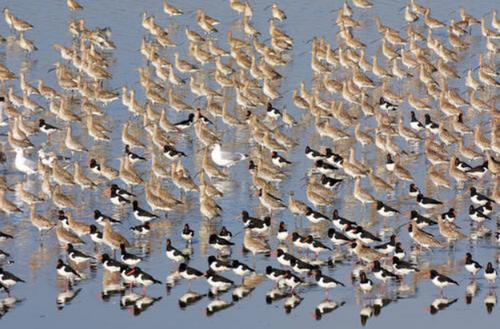
Located in the eastern Yellow Sea on the southwestern and southern coast of the Republic of Korea, often called South Korea, the site includes four parts: Seocheon Getbol, Gochang Getbol, Shinan Getbol and Boseong-Suncheon Getbol. Getbol means tidal flats in Korean.
The site exhibits a complex combination of geological, oceanographic and climatologic conditions that have led to the development of coastal diverse sedimentary systems.
Each component represents one of four tidal flat subtypes – estuarine type, open embayed type, archipelago type and semi-enclosed type.
The site hosts high levels of biodiversity, with reports of 2,150 species of plants and animals, including 22 globally threatened or near-threatened species.
It is home to 47 endemic and five endangered marine invertebrate species besides a total of 118 migratory bird species for which the site provides critical habitats.
Endemic animals include Mud Octopuses (Octopus minor), and deposit feeders like Japanese Mud Crabs (Macrophthalmus japonica), Fiddler Crabs (Uca lactea), and bristle worms (Polychaetes), Stimpson’s Ghost Crabs (Ocypode stimpsoni), Yellow Sea Sand Snails (Umbonium thomasi), and various suspension feeders like clams.
The committee said this site demonstrates the link between geodiversity and biodiversity, and the dependence of cultural diversity and human activity on the natural environment.
Gabon: Ivindo National Park
Right on the equator in northern Gabon, this largely pristine national park created in 2004 encompasses an area of almost 300,000 ha (1,158 square miles) criss-crossed by a network of blackwater rivers. It features rapids and waterfalls bordered by intact rainforest, which make for a landscape of great beauty.
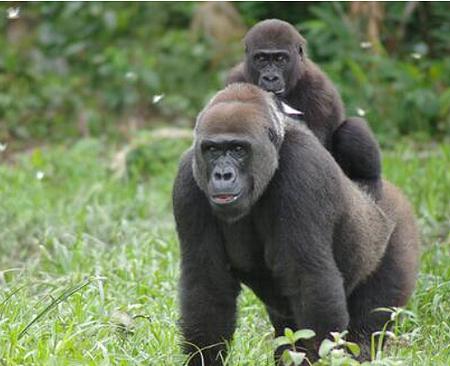
Ivindo National Park has some of the densest rainforests in the world and some of the most magnificent waterfalls of central Africa, including Kongou, Mingouli, and Djidji waterfalls.
There are threatened mammals such as the Critically Endangered Forest Elephant (Loxodonta cyclotis), Western Lowland Gorilla (Gorilla gorilla), the Endangered Chimpanzee (Pan troglodytes), the Mandrill (Mandrillus sphinx), Leopard (Panthera pardus), and African Golden Cat (Caracal aurata), three species of Pangolin (Manidae spp.), and birds such as the Grey Parrot (Psittacus erithacus) as well as the Vulnerable Grey-necked Rockfowl (Picathartes oreas).
Critically Endangered Slender-snouted Crocodiles (Mecistops cataphractus) find shelter in Ivindo National Park which also hosts biogeographically unique Caesalpinioideae old-growth forests of high conservation value, supporting, for instance, a very high diversity of butterflies.
The park’s aquatic habitats harbor endemic freshwater fish species, 13 of which are threatened, and at least seven species of Podostemaceae riverweeds, with probable micro-endemic aquatic flora at each waterfall. Many fish species on the site have yet to be described and parts of the site have hardly been investigated, the committee said.
Thailand: Kaeng Krachan Forest Complex
Along the Thailand side of the Tenasserim mountain range, part of a north-south granite and limestone mountain ridge running down the Malay Peninsula, grows the Kaeng Krachan Forest Complex.
Located at the crossroads between the Himalayan, Indochina, and Sumatran animal and plant realms, the site hosts rich biodiversity. It is dominated by semi-evergreen/dry evergreen and moist evergreen forest with some mixed deciduous forest, montane forest, and deciduous dipterocarp forest.
A number of endemic and globally endangered plant species have been reported on the site, which overlaps with two Important Bird Areas (IBAs) and is noted for its rich diversity of birdlife, including eight globally threatened species.
The critically endangered Siamese Crocodile (Crocodylus siamensis) lives in the forest, and so does the endangered Asiatic Wild Dog (Cuon alpinus), Banteng (Bos javanicus), Asian Elephant (Elephas maximus), Yellow/Elongated Tortoise (Indotestudo elongata), and the endangered Asian Giant Tortoise (Manouria emys), among other vulnerable species of birds and mammals.
“Remarkably,” said the committee “it is also home to eight cat species: the endangered tiger (Panthera tigris) and Fishing Cat (Prionailurus viverrinus), near-threatened Leopard (Panthera pardus) and Asian Golden Cat (Catopuma temminckii), the vulnerable Clouded Leopard (Neofelis nebulosi) and Marbled Cat (Pardofelis marmorata), as well as Jungle Cat (Felis chaus) and Leopard Cat (Prionailurus bengalensis).”
Protection By Extension
Also during the current session, the World Heritage Committee approved an Extension to Ancient and Primeval Beech Forests of the Carpathians and Other Regions of Europe (in Bosnia Herzegovina, Czechia, France, Italy, North Macedonia, Poland, Slovakia, Switzerland)
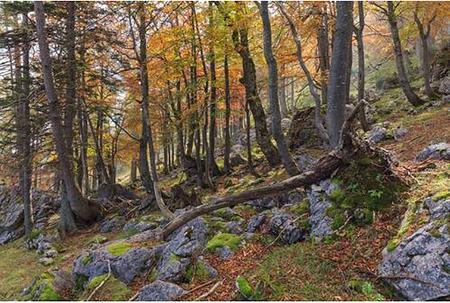
The extension of the transnational World Heritage serial site by 10 European countries adds to the outstanding universal value and integrity of the site, which now takes in 94 component parts across 18 countries.
The committee calls this site an “outstanding example of relatively undisturbed, complex temperate forests” that “exhibit a wide spectrum of comprehensive ecological patterns and processes of pure and mixed stands of European beech across a variety of environmental conditions.”
In China’s Hubei Province, the Hubei Shennongjia World Heritage Site was extended westward to include the Chongqing Wulipo National Nature Reserve.
The Hubei Shennongjia site protects the largest primary forests remaining in central China and provides habitat for many rare animal species, such as the Chinese Giant Salamander, the Golden or Sichuan Snub-nosed Monkey, the Clouded Leopard, Common Leopard and the Asian Black Bear.
Shennongjia is situated where the plains and foothill regions of eastern China become the mountainous region of central China – a zone of climate transition, where the climate shifts from the subtropical zone to warm temperate zone, and where warm and cold air masses from north and south meet.
A result of its transitional geographic position, the Shennongjia region has emerged as one of three centers of endemic plant species in China, and is considered one of China’s three major biodiversity centers.
Conservationists say the westward extension of the Shennongjia World Heritage Site helps protect the forest habitat and migration corridor so vital to the inhabitants, improving the ecological connectivity and integrity of the entire site.
In and Out of Danger
“Sufficient” improvements in the conservation of the World Heritage site Salonga National Park in the Democratic Republic of the Congo have been made to warrant its removal from the List of World Heritage in Danger, the comittee decided during the current session.
The committee “welcomed” the clarification provided by DRC national authorities that “the oil concessions overlapping with the property are nul and void and that these blocs will be excluded from future auctioning.”
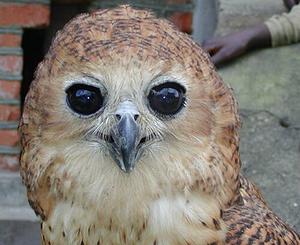
Additionally, “The management of the park has been greatly improved, notably with regard to the strengthening of anti-poaching measures,” the committee said.
Inscribed in 1984 on the World Heritage List and in 1999 in the List of World Heritage in Danger, Salonga National Park is Africa’s largest tropical rainforest reserve.
Situated at the heart of the central basin of the Congo River, the park is isolated and accessible only by water. It is the habitat of many endemic endangered species, such as the bonobo, the Congo peacock, the forest elephant and the African slender-snouted crocodile.
Regular monitoring of wildlife shows that bonobo populations remain stable in the park despite past pressures and that the forest elephant population has slowly begun recovering.
The Committee recognized the efforts made by the national authorities, UNESCO’s World Heritage Centre and the International Union for the Conservation of Nature, IUCN, to reach this achievement.
Australia’s Lobbying Keeps Great Barrier Reef Off Danger List
The world’s longest reef, the Great Barrier Reef off Australia’s east coast, will not be placed on the List of World Heritage in Danger after a intense lobbying effort from Australia against the proposed listing.
The World Heritage Committee on Friday chose not to follow a scientific assessment from UNESCO that the reef is in danger from climate change that caused coral bleaching in 2016, 2017, and 2020. because of Australia’s slow-walking its response to the climate emergency.
“The science is clear” that the reef is in perilous condition, marine ecologist Terry Hughes of James Cook University, Townsville, tweeted in response, calling the committee decision “a travesty.”
Ahead of the World Heritage Committee meeting, Australia’s Environment Minister Sussan Ley detailed Australia’s position to representatives of 18 of the 21 member countries on the committee either in person by visiting Hungary, France, Spain, Bosnia and Herzegovina, Oman, and the Maldives – or virtually. All 18, and Australia, voted against an “In Danger” listing for the Great Barrier Reef.
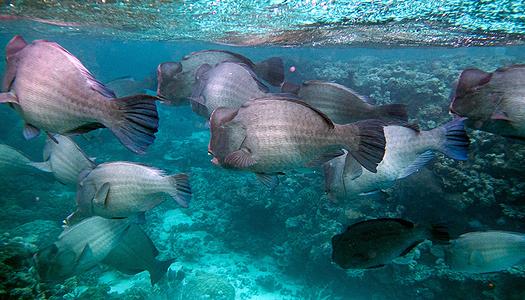
“Our concern was always that UNESCO had sought an immediate In Danger listing without appropriate consultation, without a site visit and without all the latest information, and it is clear that this process has concerned not only Australia but other nations as well,” said Ley after the vote.
Australia has reaffirmed its A$3 billion commitment to protecting the reef and supporting the work of reef communities, reef managers, marine scientists, Traditional Owners and the 64,000 Australians who depend on the reef economy.
“The World Heritage Committee’s endorsement of Australia’s position will give reef managers, marine scientists and land managers the ability to demonstrate the success of the outstanding work that is taking place across the reef,” Ley said.
“Crucially,” she said on July 23, “tonight’s decision will allow the World Heritage Committee to develop a framework that ensures all properties, including the 83 identified through the World Heritage process as being at risk from climate change, to be treated in the same way.”
UNESCO will instead be asked to carry out a mission to the 2,300 km-long reef in the coming months, and Australia will be required to send a progress report to the UN agency by February 2022, earlier than a December 2022 deadline the country had requested.
A total of 34 sites, or as the committee calls them, “properties,” were inscribed during the World Heritage Committee session just concluded, and three properties were extended. The new properties include 29 cultural and five natural sites.
The current session’s inscriptions bring the total number of sites on UNESCO’s World Heritage List to 1154, of which 218 are Natural Sites. The rest are Cultural or Mixed Sites.
The next meeting, the 45th session of the World Heritage Committee, will take place on the banks of the Volga and Kazanka rivers in Kazan, Russia’s fifth-largest city and capital of the Republic of Tatarstan. That meeting is set for June 19 to 30, 2022, under the chairmanship of Russian diplomat Alexander Kuznetsov.
Featured image: Mangrove forest on the Nakama River, Iriomote Island, Japan, January 1, 2009 (© Photo courtesy Ministry of the Environment, Japan via World Heritage Committee)
© 2021, Environment News Service. All rights reserved. Content may be quoted only with proper attribution and a direct link to the original article. Full reproduction is prohibited.

